Text
What is the latest information about solar energy?
Here are some recent solar news:
1. Solar power installations have surged in the United States, with more than 5 GW of new solar capacity added in the first quarter of 2023 alone. This marks a 46% increase over the same period last year, according to a report by the Solar Energy Industries Association.
2. Researchers at the University of California, Los Angeles have developed a new type of solar cell that uses perovskite materials and can convert sunlight into electricity with an efficiency of 29.1%. This is a significant improvement over existing perovskite-based solar cells, which typically have efficiencies of around 20%.
3. The Indian government has announced plans to build the world's largest floating solar power plant, with a capacity of 600 MW. The plant will be located on the Omkareshwar reservoir in the central state of Madhya Pradesh and is expected to be operational by 2024.
4. The Australian Renewable Energy Agency has announced funding for a new project that will explore the use of solar power to produce green hydrogen. The project, which will be led by the Commonwealth Scientific and Industrial Research Organisation (CSIRO), aims to develop a cost-effective and scalable solution for producing hydrogen from solar energy.
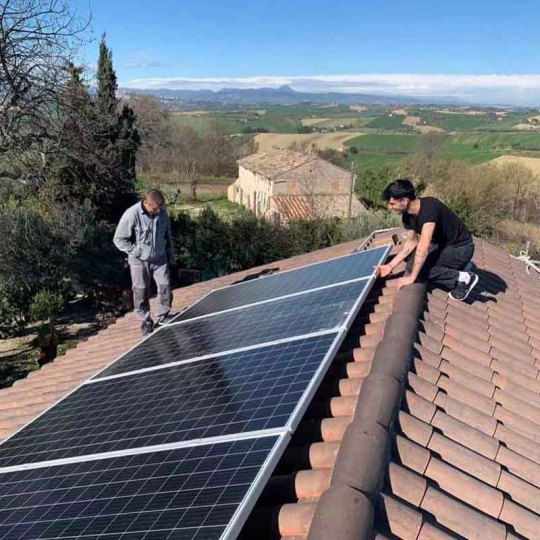
5. Solar power is becoming increasingly popular in Africa, with countries such as Egypt, Morocco, and South Africa leading the way in terms of installed capacity. According to the International Energy Agency, Africa's installed solar capacity could grow from around 5 GWin 2020 to as much as 50 GW by 2040, as governments and businesses invest in renewable energy to meet growing demand for electricity.
1 note
·
View note
Text
What is the difference between lithium iron phosphate battery and lithium battery?
Lithium iron phosphate battery refers to lithium ion battery using Ferrous lithium phosphate as cathode material. Lithium battery is a kind of battery with lithium metal or lithium alloy as negative electrode material and non-aqueous electrolyte solution.
Advantages of lithium iron phosphate battery
1. Ultra-long service life: Lithium iron phosphate battery has a long service life, with a cycle life of more than 2,000 times. Under the same conditions, lithium iron phosphate battery can be used for 7-8 years.
2. Safety in use: The lithium iron phosphate battery has undergone strict safety tests, and it will not explode even in traffic accidents.
3. Energy saving and environmental protection: Lithium iron phosphate battery is green, non-toxic and pollution-free, with wide sources of raw materials and low price.
4. Fast charging: Use a special charger, and charge at 1.5C for 40 minutes to fully charge the battery.
5. High temperature resistance: The lithium iron phosphate battery is high temperature resistant, and the hot air value of the battery can reach 350-500℃.
6. Large capacity: The capacity of lithium iron phosphate battery is large.
Disadvantages of lithium iron phosphate battery
1. The true density of lithium iron phosphate battery anode is small, and the density is generally around 0.8-1.3.
2. Poor conductivity, slow lithium ion diffusion speed, and low actual specific capacity at high charge and discharge.
3. The low-temperature performance of lithium iron phosphate battery is poor.
4. The life of a single lithium iron phosphate battery is about 2000 times, but the life of lithium iron phosphate battery pack is short, generally about 500 times.
Application field of lithium iron phosphate battery
Large electric vehicles, light electric vehicles, electric tools, solar and wind power energy storage equipment, UPS and emergency lights, warning lights and miner's lamps, small medical instruments and portable instruments.
Advantages of lithium battery
1. The energy is relatively high, with high storage energy density, which can reach 460-600Wh/kg, which is 6-7 times that of lead-acid batteries.
2. It has high power tolerance, among which the lithium ion battery of ferrous phosphate used in electric vehicles can reach 15-30C charging and discharging capacity, which is convenient for high-strength startup acceleration.
3. Light weight, which is about 1/6-1/5 of that of lead-acid products in the same volume.
4. It has strong adaptability to high and low temperatures, and can be used in the environment of -20-60℃. After technological treatment, it can be used in the environment of -45℃.
5. Environmental protection, no matter whether it is produced, used or scrapped, it does not contain any toxic and harmful heavy metal elements and substances such as lead, mercury and cadmium.

Disadvantages of lithium battery
1. Lithium batteries can't discharge with high current, which is expensive and poor in safety.
2. The lithium battery shall be protected from overcharge and overdischarge.
3. High production requirements and high cost.
4. The conditions of use are limited, and the danger of high and low temperature use is great.
Application field of lithium battery
Traffic power supply, electric energy storage power supply, mobile communication power supply, new energy storage power supply, aerospace military power supply.
Difference between lithium iron phosphate battery and lithium battery
1. Lithium iron phosphate batteries are used as lithium-ion secondary batteries, and now the main direction is power batteries. Compared with Ni-H, Ni-Cd batteries have great advantages.
2. Lithium battery is a kind of battery with lithium metal or lithium alloy as cathode material and non-aqueous electrolyte solution. The chemical characteristics of lithium are very active, which makes the processing, storage, use and environment of lithium metal very demanding.
3. The lithium iron phosphate battery will not catch fire and explode, but the lithium battery will.
4. Ferrous lithium phosphate is overcharge-resistant, and it won't explode when it reaches 100%. When the lithium battery reaches the specified value, it will swell.
1 note
·
View note
Text
The trend of lithium batteries in the field of new energy
The demand for lithium batteries continues to surge as industries around the world increasingly adopt electric vehicles, renewable energy systems, and portable electronic devices. This trend has fueled a boom in the production of lithium-ion batteries, with experts predicting that the market for these batteries will continue to grow in the coming years.
According to a recent report by market research firm, the global lithium-ion battery market is expected to reach USD 129.3 billion by 2027, growing at a CAGR of 18.0% from 2020 to 2027. The report attributed this growth to the increasing adoption of electric vehicles and the growing demand for renewable energy storage systems.
In addition to the automotive and energy sectors, lithium batteries are also being used in a wide range of consumer electronics, including smartphones, laptops, and wearable devices. This has further boosted the demand for these batteries, with manufacturers ramping up production to meet the growing demand.
One of the key drivers of this trend is the ongoing development of new and innovative lithium battery technologies. Researchers are constantly exploring new ways to improve the performance and lifespan of lithium batteries, as well as reduce their cost and environmental impact.
For example, companies are experimenting with new materials for the cathode and anode of lithium batteries, such as silicon, which has the potential to increase the energy density of batteries and reduce their weight. Other companies are exploring the use of solid-state batteries, which offer higher energy densities and lower risk of fires compared to traditional lithium-ion batteries.
Overall, the trend towards lithium batteries is expected to continue as industries around the world increasingly adopt clean energy and electric transportation. As battery technology continues to evolve, we can expect to see even more innovative applications of lithium batteries in the years to come.

0 notes
Text
Nigeria will soon face a 35% increase in electricity bills
Nigeria's current electricity bill is 24 naira per kWh. If prices rise by 35%, the figure will rise to 32 naira per kWh. This may further infuriate the public, who are already complaining that dealers charge more and offer less services.
Global climate change is receiving more and more attention, and low-carbon economy is strongly supported by all countries. As a kind of sustainable clean energy, solar energy shows great development and application potential. At present, the rapid development of solar photovoltaic industry is a way to provide new energy in the future, and its practical application in life is more extensive. The operation cost is low, photovoltaic system uses solar energy to generate electricity, and the energy is free. Once installed, the photovoltaic system can provide power with little maintenance and operation cost.
10KW solar power system project in Nigeria for home use
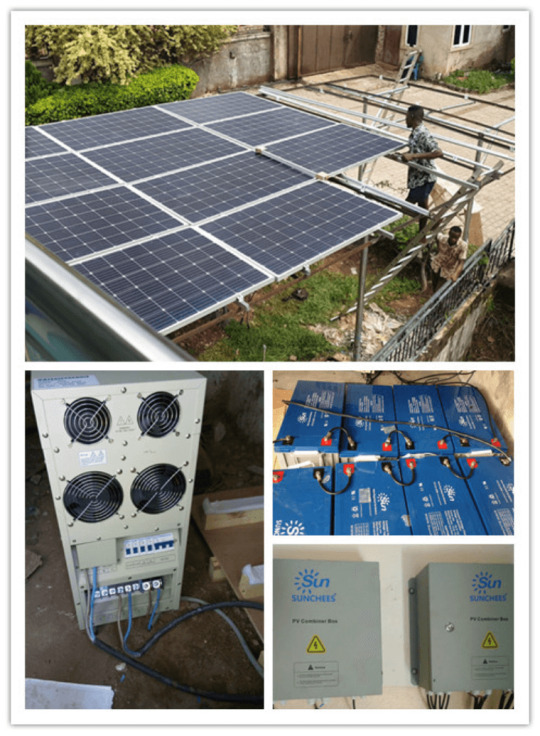
0 notes
Text
What are the advantages of solar energy?
Solar energy has the advantages of universality, harmlessness, large reserves and long service life.
(1) Universal: The sun shines on the earth, without geographical restrictions, whether on land or sea.
No matter mountains or islands, they are everywhere, which can be directly developed and utilized, and it is easy to collect, without mining and transportation.
(2) Harmless: the development and utilization of solar energy will not pollute the environment, and it is one of the cleanest energy sources.
(3) Huge: The annual solar radiation energy reaching the earth's surface is equivalent to about 13 trillion tons of coal, and its total amount is the largest energy that can be developed in the world today.
(4) Long-term: According to the estimation of the rate of nuclear energy generated by the sun, the storage of hydrogen is enough to last for tens of billions of years, and the life span of the earth is about billions of years. In this sense, it can be said that the energy of the sun is inexhaustible.
From the energy saving and emission reduction targets of various countries and the United Nations Special Report on Renewable Energy, it is a worldwide trend to realize a high proportion of renewable energy substitution by 2050, which will promote the development of China's solar photovoltaic power generation industry.
The total energy demand will reach 5 billion tons of standard coal by 2030 and 5.2 billion tons by 2050. Renewable energy accounts for 40% of the total energy demand in 2050, and renewable energy accounts for 60% of the electricity demand. The installed capacity of photovoltaic power generation may reach 1 billion KW. The strong support of national policies will promote the rapid and healthy development of China's solar photovoltaic power generation industry
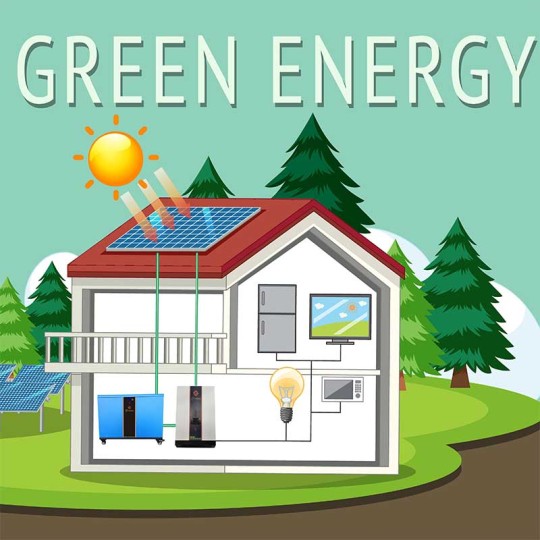
0 notes
Text
How does solar power compare to other renewable energy sources?
Solar power is one of several renewable energy sources that can be used to generate electricity. Here is a comparison of solar power to some of the other popular renewable energy sources:
Wind Power: Wind turbines generate electricity by harnessing the kinetic energy of the wind. While both solar power and wind power are clean and renewable energy sources, wind power can produce more energy than solar power in certain areas with high wind speeds. However, wind power is more variable than solar power and can be affected by weather conditions.
Hydro Power: Hydro power generates electricity by harnessing the energy of flowing water. Hydro power plants can generate a large amount of electricity, but they require a significant amount of infrastructure to be built, such as dams and hydroelectric turbines. Solar power, on the other hand, can be easily installed on rooftops and in open areas, making it a more versatile energy source.
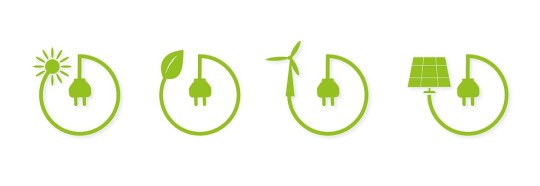
Geothermal Power: Geothermal power uses the natural heat of the Earth to generate electricity. While geothermal power is a reliable and constant energy source, it can only be used in certain areas where the Earth's crust is thin enough to access the heat source. Solar power, on the other hand, can be used in almost any location with sufficient sunlight.
Biomass Power: Biomass power generates electricity by burning organic matter, such as wood or agricultural waste. While biomass power is a renewable energy source, it can produce significant emissions and particulate matter when burned. Solar power, on the other hand, has no emissions and does not require any fuel to be burned.
Overall, solar power is a versatile and reliable renewable energy source that can be used in a wide range of locations. While it may not produce as much energy as some other renewable sources in certain conditions, it is a clean and sustainable source of energy that is becoming increasingly competitive with traditional fossil fuels.
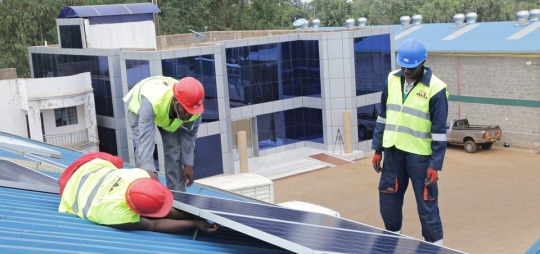
0 notes
Text
what's in a off grid solar power system ?
The solar power generation system consists of a solar panel , solar controller , solar inverter , solar battery
The functions of each part are as follows:
1) Solar panels: solar panels are not only the core part of the solar power generation system, but also the most valuable part of the solar power generation system. Its function is to convert the radiant energy of the sun into electricity, or send it to the battery for storage, or drive the load to work. The quality and cost of solar panels will directly determine the quality and cost of the whole system.
2) Solar controller: the function of solar energy controller is to control the working state of the whole system, and to protect the battery from overcharge and overdischarge. Where the temperature difference is large, the qualified controller should also have the function of temperature compensation. Other additional functions such as light control switch and time control switch should be the functions that the controller should have.
3) Storage battery: generally lead-acid battery, Gel battery, or lithium battery can also be used in small systems. Because the input energy of the solar photovoltaic system is extremely unstable, it is generally necessary to configure the battery system to work. Its function is to store the electricity generated by solar panels when there is light and release it when needed.
4) Solar Inverter: in many occasions, it is necessary to provide AC power supply of 220VAC and 110VAC. Because the direct output of solar energy is generally 12VDC, 24VDC, 48VDC. In order to provide electricity to the electrical appliances of 220VAC, it is necessary to convert the DC power generated by the solar power generation system into AC power, so it is necessary to use DC-AC inverter.

0 notes
Text
What are the characteristics of solar power generation?
Solar power generation has many unique advantages:
1. Solar energy is inexhaustible clean energy, and solar photovoltaic power generation is safe and reliable, and will not be affected by energy crisis and unstable factors of fuel market;
2. The sun shines on the earth, and solar energy is available everywhere. Solar photovoltaic power generation is especially suitable for remote areas without electricity, and it will reduce the construction of long-distance power grid and the power loss on transmission lines;
3, the generation of solar energy does not need fuel, so that the operation cost is greatly reduced;
4. Except tracking type, solar photovoltaic power generation has no moving parts, so it is not easy to be damaged, easy to install and simple to maintain;
5. Solar photovoltaic power generation will not produce any waste, and will not produce noise, greenhouse and toxic gas. It is an ideal clean energy source. Installation of 1KW photovoltaic power generation system can reduce the annual emission of CO2 600 ~ 2 300kg, NOx16kg, SOx9kg and other particles 0.6kg;;
6. The roof and walls of the building can be effectively used without occupying a large amount of land, and the solar panels can directly absorb solar energy, thereby lowering the temperature of the walls and roof and reducing the load of indoor air conditioners;
7. The construction period of solar photovoltaic power generation system is short, and the service life of power generation components is long, the power generation mode is flexible, and the energy recovery period of power generation system is short;
8. It is not limited by the geographical distribution of resources; It can generate electricity nearby where electricity is used.
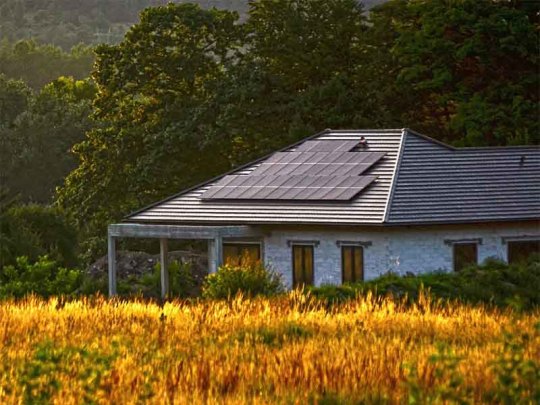
0 notes
Text
How to maintain the solar inverter?
Use:
1. Connect and install the equipment in strict accordance with the requirements of the inverter operation and maintenance manual. During installation, carefully check whether the wire diameter meets the requirements; Whether all parts and terminals are loose during transportation; Whether the insulation place is well insulated; Whether the grounding of the system meets the requirements.
2, should be strictly in accordance with the provisions of the inverter operation and maintenance instructions. In particular, pay attention to whether the input voltage is normal before starting the machine; During operation, attention should be paid to whether the turn-on and turn-off sequence is correct, and whether the indications of each meter and indicator light are normal.
3. Inverters generally have automatic protection for open circuit, overcurrent, overvoltage, overheating and other items, so when these phenomena occur, there is no need for manual shutdown; The protection point of automatic protection is generally set at the factory, and no adjustment is needed.
4. When there is high voltage in the inverter cabinet, the operator is generally not allowed to open the cabinet door, which should be locked at ordinary times.
5. When the room temperature exceeds 30℃, heat dissipation and cooling measures should be taken to prevent equipment failure and prolong its service life.
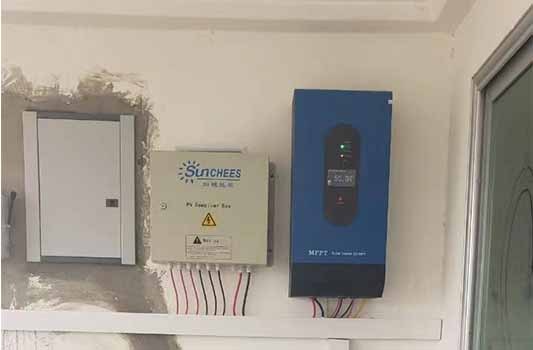
Maintenance:
1. Regularly check whether the wiring of each part of the inverter is firm and loose, especially the fan, power module, input terminal, output terminal and grounding.
2. Once the alarm stops, it is not allowed to start the machine immediately. The machine should be started after finding out the reason and repairing it. The inspection should be carried out in strict accordance with the steps specified in the inverter maintenance manual.
3. Operators must be specially trained to judge the causes of common faults and eliminate them, such as skillfully replacing fuses, components and damaged circuit boards. Untrained personnel are not allowed to operate and use the equipment.
4. In case of an accident that cannot be easily ruled out or the cause of the accident is unclear, a detailed record of the accident should be made, and the inverter manufacturer should be informed in time to solve it.
0 notes
Text
What are the functions of grid-connected and off-grid inverters?
Off-grid photovoltaic power station is to store solar power into storage battery, and then convert it into 220V voltage for household use through inverter.
Grid-connected photovoltaic power station refers to the grid-connected photovoltaic power station, which has no electric energy storage device, and is directly converted into the voltage requirements required by the national power grid through an inverter, and is preferentially used by families, and the electricity that families can not use up can be sold to the country.
At present, with the support of national policies, solar photovoltaic power generation is being vigorously supported. As long as household photovoltaic power stations generate electricity, there will be state subsidies. However, if you are connected to the grid, you must first apply to the local state grid department.
Grid connection means that it must be connected to the public power grid, that is, solar power generation, home power grid and public power grid are linked together. This is a power generation system that must rely on the existing power grid to operate.
It is mainly composed of solar panels and inverters. The solar panels are directly converted into 220V alternating current through the inverter and supply power to household appliances. When the solar power generation exceeds the electricity used by household appliances, the excess electricity is delivered to the public power grid. When the solar energy can't meet the needs of household appliances, it will be automatically supplemented from the power grid. And the whole process is intelligently controlled without manual operation.
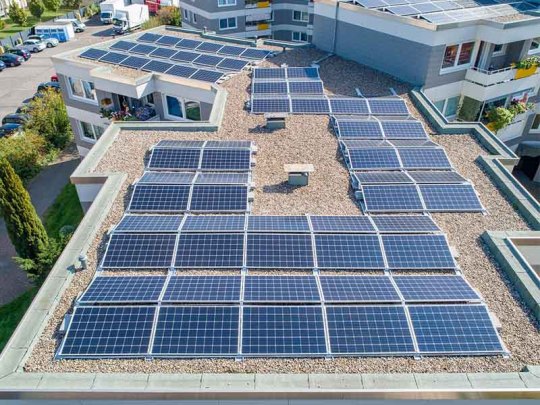
Because this photovoltaic power generation system does not need batteries, it greatly saves the cost. Especially, the national grid-connected policy has clearly indicated that household photovoltaic power stations can be connected to the grid for free, and the surplus electricity can also be sold to power companies.
From the long-term perspective of investment, according to the 25-year service life of household photovoltaic power plants, the cost can be recovered in about 6-10 years, and the remaining ten years will be earned. Therefore, if you want to save the electricity bill and the electricity supply is convenient, you should choose the grid-connected solar power generation system, which is also the mainstream way at present.
However, grid connection also has its disadvantages, that is, when the public power grid is cut off, photovoltaic power generation can't run. However, if the grid-connected inverter is replaced with intelligent microgrid inverter (grid-connected and off-grid hybrid inverter), the power station can still operate normally when the power is cut off.
So, how can we store the electricity generated during the day for use at night? This requires the addition of controllers and batteries, etc. During the day, the controller stores the power generated by PV in the battery, and at night, the controller releases the power stored in the battery for lighting.
Off-grid photovoltaic power station, also known as independent photovoltaic power station, is a power generation system that operates independently without relying on the power grid. It is mainly composed of solar panels, energy storage batteries, charge and discharge controllers, inverters and other components. The electricity generated by the solar panels directly flows into the storage battery and is stored. When it is necessary to power the electrical appliances, the direct current in the storage battery flows through the inverter and is converted into 220V alternating current.
This is a repeated cycle of charge and discharge process. This kind of power generation system is widely used because it is not limited by the region. It can be installed and used as long as there is sunlight, so it is very suitable for remote areas without power grid, isolated islands, fishing boats, outdoor breeding bases, etc. It can also be used as emergency power generation equipment in areas with frequent power outages.
This kind of system must be equipped with storage batteries, and it accounts for 30-50% of the cost of the power generation system. Moreover, the service life of the battery is generally 3-5 years, and then it has to be replaced, which increases the use cost. Economically speaking, it is difficult to be widely used, so it is not suitable for use in places where electricity is convenient.
But for families in areas without power grid or areas with frequent power outages, it has strong practicability. Especially, in order to solve the lighting problem in power failure, DC energy-saving lamps can be used, which is very practical. Therefore, the off-grid power generation system is specially used in areas without power grid or areas with frequent power outages.
0 notes
Text
What is the development trend of solar inverter?
Solar Inverter is the brain and heart of photovoltaic power generation system. In the process of solar photovoltaic power generation, the power generated by photovoltaic array is DC power. However, many loads need AC power. The DC power supply system has great limitations, so it is inconvenient to change the voltage, and the application range of loads is limited. Except for special electric loads, inverters are required to convert DC power into AC power. Photovoltaic inverter is the heart of solar photovoltaic power generation system. It converts the direct current generated by photovoltaic modules into alternating current, which is delivered to local load or power grid, and is a power electronic device with relevant protection functions.
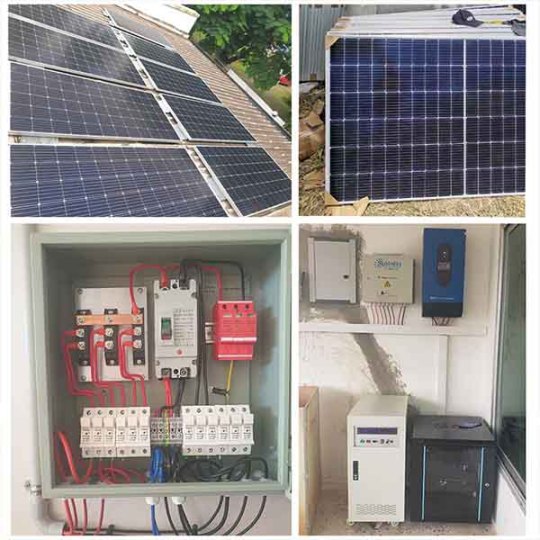
The solar inverter is mainly composed of power module, control circuit board, circuit breaker, filter, reactor, transformer, contactor and cabinet, etc. The production process includes electronic parts pre-processing, whole machine assembly, testing and whole machine packaging, etc. Its development depends on the development of power electronics technology, semiconductor device technology and modern control technology.
For solar inverters, improving the conversion efficiency of power supply is an eternal topic, but when the efficiency of the system is getting higher and higher, nearly 100%, further improvement of efficiency will be accompanied by low cost performance. Therefore, how to maintain a high efficiency and good price competitiveness will be an important topic at present.
Compared with the efforts to improve the efficiency of inverter, how to improve the efficiency of the whole inverter system is gradually becoming another important topic of solar energy system. In a solar array, when the partial shadow of 2%-3% area appears, for the inverter with one MPPT function, the output power of the system at this time will even drop by about 20%. In order to better adapt to the similar situation, it is a very effective method to adopt one-to-one MPPT or multiple MPPT control functions for single or partial solar module.
Because the inverter system is connected to the grid, the leakage of the system to the ground will cause serious safety problems. In addition, in order to improve the efficiency of the system, most solar arrays are connected in series to form a very high DC output voltage. Therefore, it is easy to produce DC arc between electrodes due to abnormal conditions. Because of the high DC voltage, it is very difficult to extinguish arc, and it is very easy to cause fire. With the wide application of solar inverter system, the problem of system security will also be an important part of inverter technology.
In addition, the power system is welcoming the rapid development and popularization of smart grid technology. A large number of new energy power systems such as solar energy are connected to the grid, which brings new technical challenges to the stability of smart grid system. Designing an inverter system compatible with smart grid more quickly, accurately and intelligently will be a necessary condition for the future solar inverter system.
Generally speaking, the development of inverter technology is along with the development of power electronics technology, microelectronics technology and modern control theory. With the passage of time, the inverter technology is developing towards higher frequency, higher power, higher efficiency and smaller volume.
0 notes
Text
More than 190,000 solar PV systems are now online in Germany
Solar energy system is becoming a development trend.
The market for plug-in PV systems has reached an unexpectedly big size in Germany.
According to a new report from the HTW Berlin – University of Applied Sciences, and German consumer association Verbraucherzentrale NRW, more than 190,000 plug-in solar devices have been installed in Germany in recent years. In 2020 and 2021 alone, up to 128,000 of these photovoltaic systems, with a total output of up to 51MW, were added.
The two entities surveyed all providers of plug-in solar systems in Germany and 58 of 156 active market participants took part. The market shows what they define as a colorful picture of small and large suppliers. “So far, a few larger providers have dominated the market while, at the same time, new providers and many smaller companies are ensuring lively competition,” explained Barbara Praetorius, professor at HTW Berlin and co-author of the study. About 75% of the plug-in solar systems are sold directly to end customers. “Sales channels via retail chains have so far hardly been used. This means there is still a lot of room for improvement in terms of market development,” Praetorius continued.
This was also confirmed by Thomas Seltmann, from Verbraucherzentrale NRW. “The study makes it clear that politicians and network operators must finally clear further hurdles,” said Seltmann. There are still arguments about standard-compliant connection and “unreasonable” demands from the electricity network operators. Therefore, simplifications for the use of plug-in solar systems are urgently needed, according to the consumer association.
Officially, plug-in balcony solar arrays must be reported in the market master data register managed by the Bundesnetzagentur – the German federal network agency. However, the study showed that not all users file the registration. “The reporting processes are too complex for plug-in solar systems. Only 10 to 20% of the systems are registered,” said Praetorius.

“We also assumed that the balcony does not play the greatest role as a location for the solar module,” explained the HTW professor. “Only every third device can be found there. Half of the devices are placed in an elevated position on the flat roof or in the garden.”
The Berlin researchers are currently investigating what the main obstacles are to reaching more tenants and thus, better tapping the potential for the plug-in solar market in Germany.
0 notes
Text
Sunchees Solar Air Conditioner Don't Need Electricity
Solar air conditioning system is green and environmentally friendly, which makes use of the energy of the sun to produce heat, which greatly reduces the cost of household electricity. And it's safe and reliable. The elderly with children are more suitable for solar air conditioning. Solar air conditioning is more powerful in performance. It's a good choice for our home life.
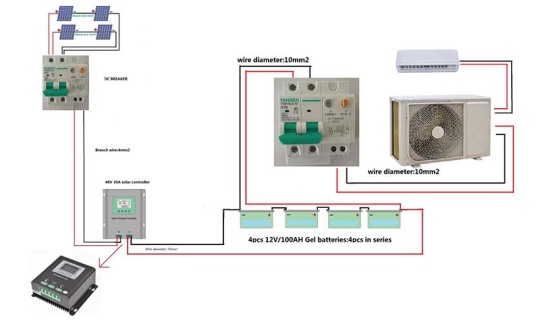
48V DC 100% solar air conditioner system consists of solar panels with panel racks, solar charge controller, Gel battery bank and DC air conditioner unit. The air conditioner unit uses 48V DC power directly from battery bank and no need inverter to convert DC power to AC power.Thus can achieve higher efficiency use of solar power.Our air conditioner unit uses TOSHIBA brand compressor and can guarantee continues and steady operation.Furthermore,just add one inverter on the battery bank,then can turn the system to solar power generator and supply electricity to other home appliances.
Philippines customer installltion 12000btu DC solar air conditioner feedback

0 notes
Text
U.S. residential solar trends, 2021
It may not come as a surprise, but residential solar had another record year in 2021 in the United States. Forecasts show 2021 will represent a 21% year-over-year growth in residential solar as the market reaches 3.9 GW installed, said the Solar Energy Industries Association (SEIA).
Residential SolarReviews released its annual review of the sector and noted a 130% increase in customer quote requests. This growth came despite a big year for 2020, in which many homeowners shopped for improvements to their residences.
The U.S. solar market has now surpassed 3 million solar installations, most of which are distributed residential PV, said SEIA. As commodity prices rose, costs took a small uptick in all solar sectors in the first half 2021, reports SEIA.

In a report built in partnership with University of California, Berkeley, SolarReviews found that 72.5% of survey respondents said the upfront cost of solar remains the most significant barrier to adoption. Primary motivations for installation included bill savings, followed by disaster resiliency and reduced carbon emissions.
With quote requests reaching new highs, SolarReviews released a home solar calculator, which allows shoppers to estimate the size of the system needed, storage options, and financing options. The tool will soon model cost and emissions savings associated with charging an electric vehicle with residential solar, said SolarReviews.
This year, SolarReviews reported a ten-fold increase in quote requests related to its guide on how to charge a Tesla at home.
Energy storage
Home battery interest and growth are ramping up nearly exponentially. The joint study found that in the span of five years (2016-2020), 71% of battery installations occurred in 2020. Installation totals for 2021 are expected to be even greater, said the study.
Interest in battery storage alongside solar is increasing, though only 11.5% of solar customer respondents to the SolarReviews – UC Berkeley survey said they have an attached battery.
SolarReviews also noted a sharp uptick in solar and energy storage quotation requests during extreme weather events. During peak wildfire season in California, it reported a 358% increase in quote requests. That figure was 850% during the Texas power crisis of February 2021, and the Pacific Northwest heatwave this June caused a 919% increase in home solar quote requests.
0 notes
Text
Current situation of American power grid scale
The volume of grid-scale energy storage installations in the United States increased four times over that seen in the first quarter of 2021, setting a new record in the first quarter 2022. According to Wood Mackenzie and the American Clean Power Association’s (ACP) latest US Energy Storage Monitor report, grid-scale installations total 2,399 MWh.
“Quarter one of 2022 was the largest first quarter on record by far for grid-scale installations, a notable milestone since installations are typically back-weighted to the second half of the year. The West Coast and Southwest regions continue to dominate for both standalone and hybrid systems,” said Vanessa Witte, a senior analyst with Wood Mackenzie’s energy storage team.
The record-setting growth occurred despite significant challenges in the industry. And those risks remain, including supply chain disruptions caused by the anti-dumping and countervailing duties (AD/CVD) solar tariff investigation initiated by the Department of Commerce (DOC) when the DOC said that it was launching an antidumping investigation into solar panel imports from Chinese companies working in Cambodia, Malaysia, Thailand and Vietnam.
“The Biden administration’s recent decision to pause AD/CVD solar tariffs for two years restores predictability to both the solar and energy storage markets. With well over 50% of utility storage projects being paired with solar farms, this important executive action will help the energy storage market continue to accelerate,” said John Hensley, vice president of research and analytics at ACP.
As battery costs drop and the need for resiliency amid grid fluctuations, residential storage was also on the rise, having its strongest quarter to date. The report estimates that 334 MWh were installed in the first quarter, improving on the previous quarterly record of 283 MWh in Q4 of last year. By 2026, the residential storage segment is forecast to grow by 5.7 GWh annually, driven in part by adoption in California in reaction to the proposed Net Energy Metering (NEM) 3.0.
“Despite challenging supply conditions continuing to suppress residential storage, the segment saw over 20,000 installations in a single quarter for the first time and we’re seeing large and small installers forge new vendor partnerships to help meet rising customer demand,” said Chloe Holden, an analyst with Wood Mackenzie.
AD/CVD-related procurement delays have slowed the non-residential storage market, which has been downgraded and predicted to grow 1 GW annually by 2026. “A meaningful share of residential solar-plus-storage projects not yet procured are being pushed to 2023, which has impacted paired storage,” Holden added.
Overall, the US energy storage market added 955 MW and 2,875 MWh across all segments in the first quarter of 2022.
“California continues to dominate the sector, with the Valley Center and Slate projects taking the top two spots for largest projects installed in Q1. We also saw more than 90 MW of storage come online outside the top seven states, including projects in Oregon and Alaska,” Witte said.
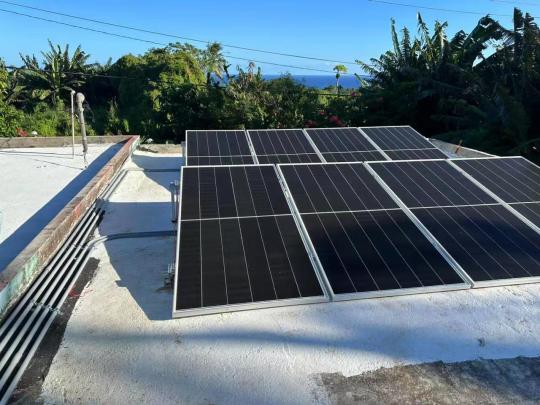
0 notes
Text
What is the best solar power system for home?
The right solar power system for your home depends on what you want out of the system.
If you’re just trying to save money on your electricity bills with the added bonus of powering your home with renewable energy, then a grid-tied solar system is probably best for you. Grid-tied systems are especially great if your utility offers full-retail net metering.
Hybrid solar power systems are better suited for homeowners who live in areas that have access to the grid but still experience frequent power outages. In most cases, solar batteries won’t save you any additional money, so you’re really paying for the peace of mind of having a battery backup bank when the grid is down. Hybrid systems are also popular for homeowners who want to maximize the amount of clean energy they use to power their homes.
Off-grid systems are best for homeowners who don’t have access to the grid. Whether it's a rural farm or a cabin in the woods, off-grid solar systems let you have the electricity that you otherwise might not have. However, going off-grid requires some substantial lifestyle changes, as you really need to be conscious of your energy consumption.

0 notes
Text
How Much Money Do Solar Panels Save You On Electric Bills?
The first step to understanding how much solar power system can save you is to calculate how much you are currently spending on electricity every year. Let’s make USA as an example, the average annual electricity use required for a U.S household is 10,649 kilowatt-hours (kWh). Multiply that by the national average electricity rate as of October 2021 ($0.1411 per kWh) and you’ll find that the typical American family is spending just over $1,500 a year on electricity alone.
Then, you have to consider the volatile nature of electricity prices and determine what utility company rates will be in years to come. When you compare the cost of utility electricity with home solar, you should keep in mind that you can expect electricity rates to increase annually. Over the past decade, national electricity costs have increased at a rate of around 1.3% per year. Utility rate inflation is an added incentive for solar: when you generate your own energy with a rooftop photovoltaic (PV) system, you’re locking in energy costs at a constant rate so that you no longer have to consider variable utility company rates.
Because of the nature of solar as an up-front investment, the only costs associated with a solar system will be the installation costs and any added electricity costs in the event that your panels do not completely offset 100% of your electricity use. Whether or not your system will completely offset your electricity needs is primarily determined by how accurately you size your PV system – you can calculate how many solar panels you’ll need to secure that percentage.
To provide a snapshot for typical energy bill savings from a solar installation,i will do below calculation for you:
System size: 6 kilowatts (kW)
Standard sunshine time:6 hours(5.91 hours at Los Angeles)
Complete set solar system efficiency:85%
6000watt*6hours*85%=30600WH=30.6KWH
Electricity rate:$0.1411 per kWh
One day can save bills:30.6KWH*0.1411=USD4.3
One year can save USD4.3*365=USD1569.5

0 notes